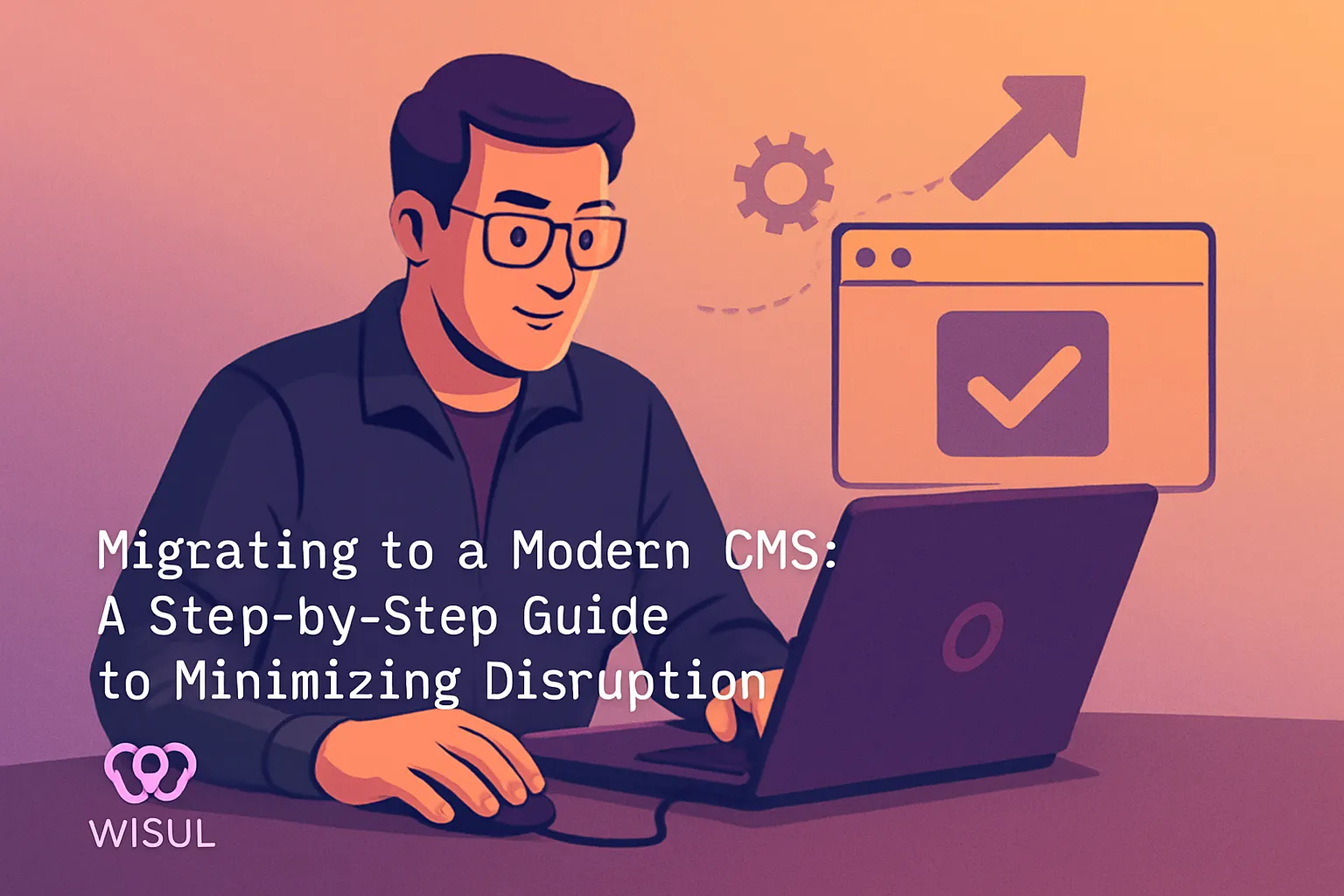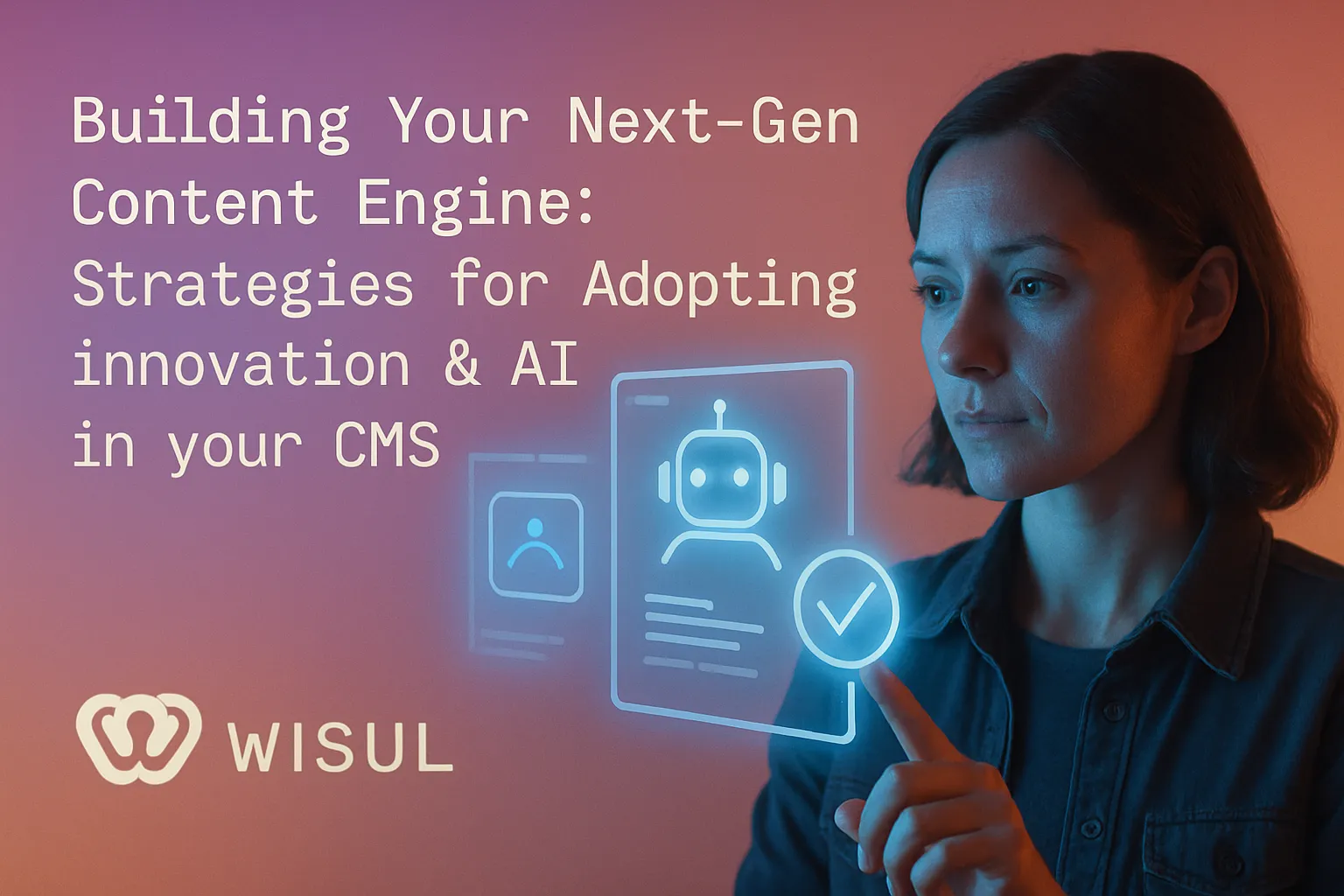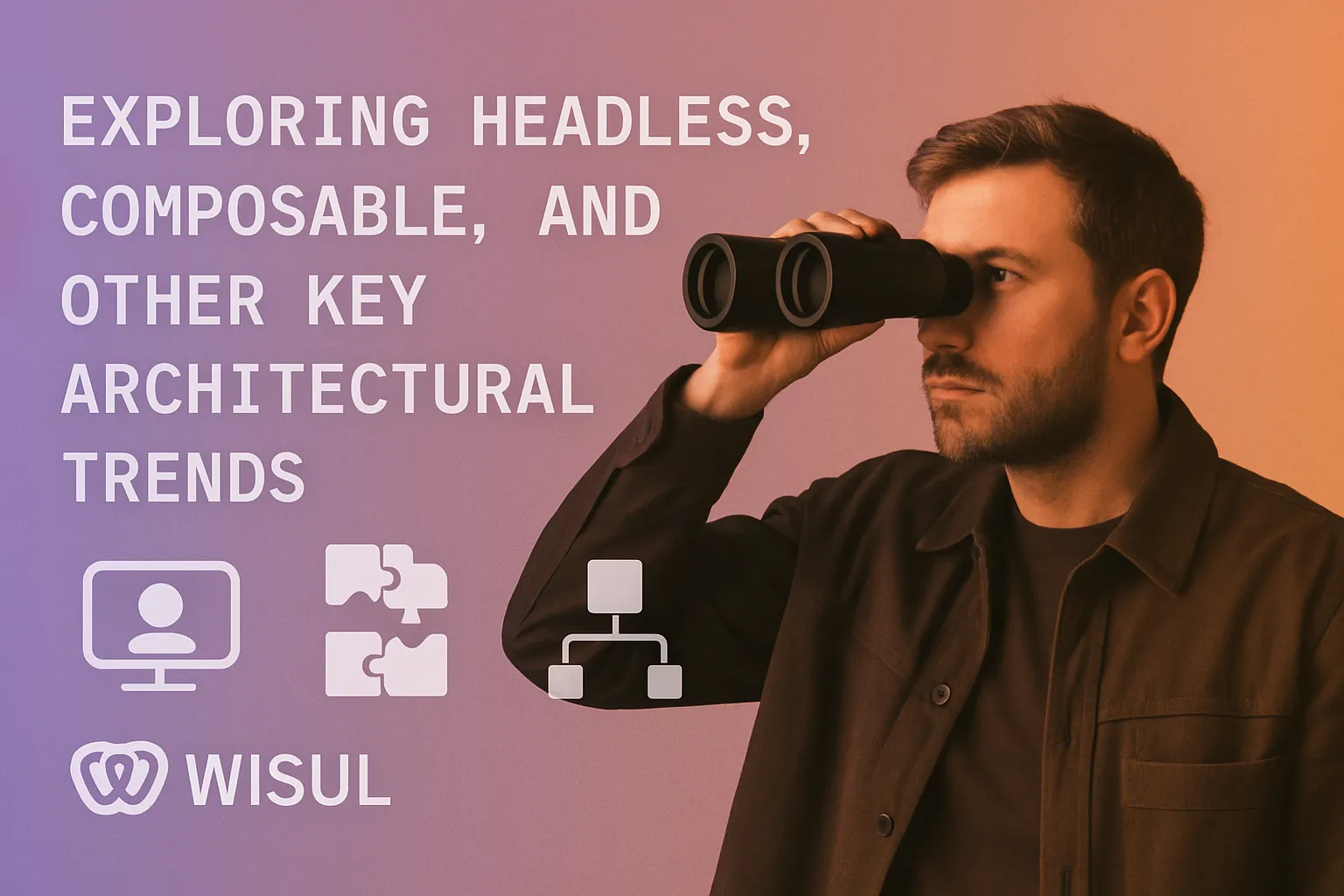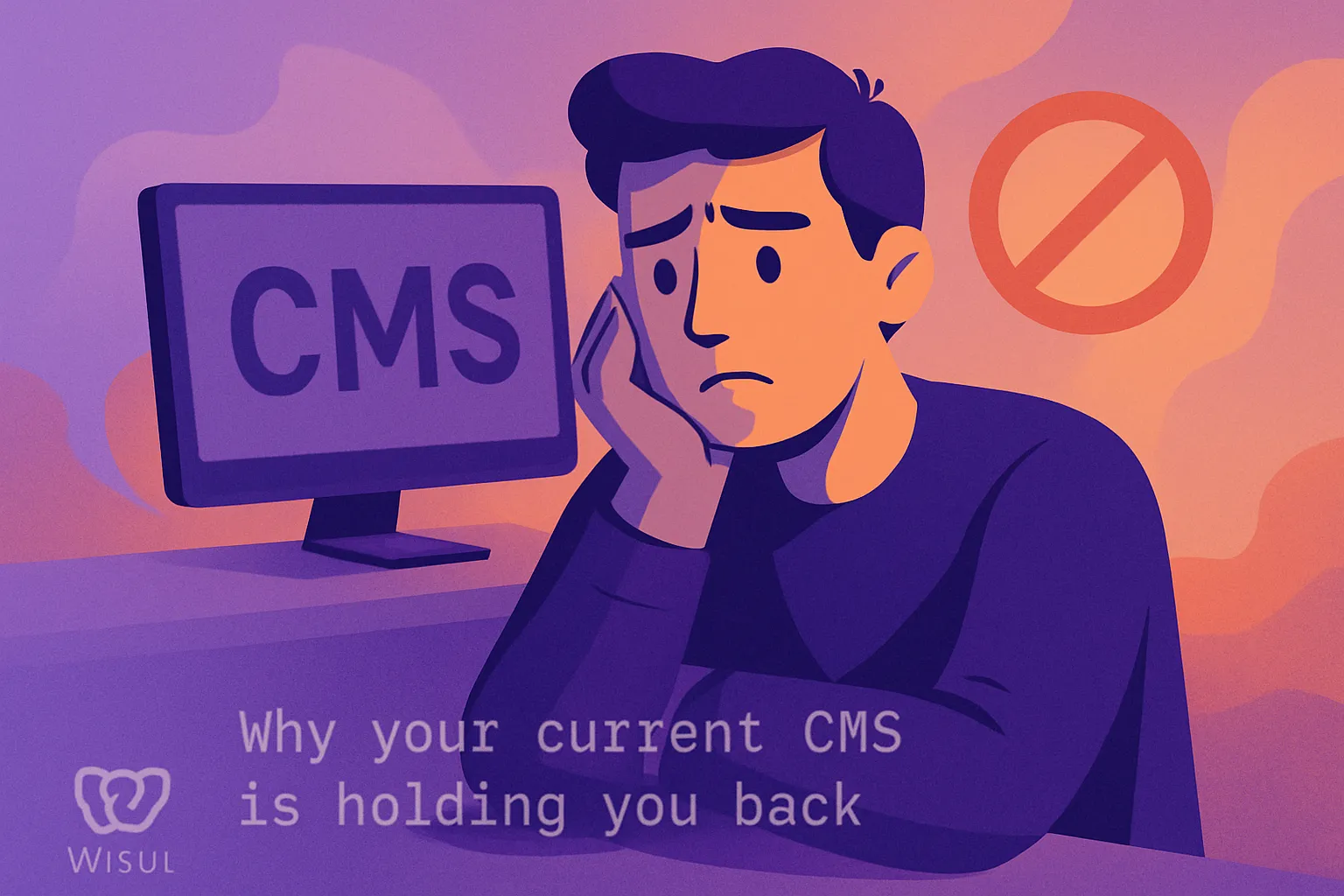- Key Takeaways
- The Migration Imperative
- Pre-Migration Groundwork
- The Human Element
- Phased Migration Strategies
- Post-Launch Optimization
- Learning from Setbacks
- Conclusion
- Frequently Asked Questions
- What is the main goal of minimizing disruption during migration?
- How can pre-migration groundwork help reduce disruption?
- Why is the human element important in migration?
- What are phased migration strategies?
- How does post-launch optimization support a smooth migration?
- What should organizations do if setbacks occur during migration?
- Why is it important to learn from migration setbacks?
Key Takeaways
- Upgrading to a new CMS isn’t just about becoming more efficient — it’s about keeping pace with your customers and competitors in a rapidly changing digital world.
- Tackling technical debt upfront in your migration minimizes these long-term costs and reduces the security and compliance risks that come with legacy systems.
- By focusing on the user — from intuitive design to efficient workflows — you maximize the user experience, the delivery of your content, and long-term engagement.
- Significant, pre-migration groundwork—clearly assembling your team, auditing your content, defining success metrics, selecting reliable partners, and mapping realistic timelines—minimizes disruption and smoothes the execution of your project.
- By prioritizing the human side with leadership alignment, change management, stakeholder communication, and employee training, you can help ensure smoother transitions and better adoption.
- Continuous post-launch optimization and learning from setbacks enable continued improvements, allowing organizations to adapt and optimize as needs change.
Disruption-minimizing guide means applying these straightforward steps to maintain simplicity and smoothness in change in work or life.
Having solid schedules and transparent conversations keeps everyone on course and steers clear of major confusion.
With clever suggestions and quick tests, the majority of groups can manage fresh assignments and alterations improving.
For those who desire less stress and more glacially steady work, these methods can assist.
The former will demonstrate actual best action.
The Migration Imperative
Organizations now feel increased strains to modernize and expand their IT infrastructure, especially in light of potential crises like pandemics. Migration is not merely a technical exercise but the essence of digital transformation, crucial for maintaining business continuity and addressing service disruptions.
Business Drivers
Operational efficiency is central to migration projects, especially in the face of potential crises. Legacy systems can cause service disruptions that gum up workflows and make processes harder than necessary. Accelerating these processes with a new CMS enables teams to do more with less friction, ultimately improving their business continuity.
Increasing customer expectations fuel change, as users demand quick, easy, mobile-optimized experiences. Old platforms are unable to handle this demand, while contemporary CMSs embrace responsive design and personalization — essential for catering to global audiences and minimizing customer impact.
Scalability must be integrated from the beginning. As businesses grow, so does their data. A scalable CMS allows companies to expand into new markets or introduce new offerings without infrastructure constraints hindering their progress.
Smart content management equals more revenue opportunities. When teams are able to publish, update, and track content with ease, it drives site traffic and engagement. Over time this can translate into increased sales and increased brand loyalty.
Technical Debt
Technical debt is the accumulation of fixes, updates, and workarounds over time. It’s like interest on a loan; if you neglect it, it compounds and makes things worse. High technical debt restricts a business’s agility.
Older systems usually cost more to maintain. They require constant patching, have no vendor support, and won’t integrate with innovative tools. All of which contributes to continuous costs and wastes squad time.
Security is a genuine threat. Aging infrastructure is vulnerable to compromises, viruses, and regulatory lapses. A single security incident can cost exponentially more than migration.
Slash your technical debt; that should be a burning priority. If you’re planning a migration, pain point map and goal set your way to a safer, smoother move.
User Experience
User experience defines the experience that people have with a brand. A clunky CMS causes frustration, error, and high churn. Even minor problems—slow load times, confusing navigation, or bad mobile support—can drive users away.
Most teams are stuck with legacy CMS tools that bury content and make it cumbersome to update. Duplicate entries, missing files, and outdated templates are all pain points that bog down day-to-day work.
The new CMS should be about clean design, simple dashboards, and guided workflows. These features make teams faster and cut training. As an example, drag-and-drop editors or live previews make content edits less dangerous.
Sustained input is important. Teams require frequent check-ins and channels to communicate problems or propose adjustments. This ensures that user needs remain at the heart of any transformation.
Migration Planning
Each migration technique has its own set of advantages and disadvantages. While big bang migrations are rapid, they often lead to service disruptions that can be risky; on the other hand, phased or hybrid migrations may be slower but help reduce the risk of catastrophic failure. Diligent data cleansing—verifying, repairing, and refreshing records—enhances data accuracy and minimizes the potential for errors that could impact customer trust.
Unplanned downtime is the primary concern during migrations. With effective planning, clear training, and a carefully selected migration method, you can minimize service disruption. Training is crucial, as up to 30% of migration errors stem from users not knowing what to do, highlighting the need for a robust training program.
Migrations frequently exceed budgets, with typical overruns around 14%. To maintain control over expenses, intelligent foresight and well-defined objectives are essential. Implementing best practices in incident management systems can help anticipate and mitigate potential crises, ensuring that business functions remain uninterrupted.
Pre-Migration Groundwork
Nothing beats a solid pre-migration plan for smooth change, as it organizes and reduces danger by establishing defined procedures, auditing infrastructure, and ensuring effective disruption documentation for all stakeholders.
1. Assemble Your Team
Pick a team with many skills: data, tech, content, and project leads. Everyone should know their responsibility, who monitors data, who tests the platform, who keeps risk logs.
Excellent teams communicate frequently and collaborate. A project tool — Trello or Asana — tracks jobs and deadlines so nothing falls through.
2. Audit Your Content
Begin with an inventory of existing content, from web pages and PDFs to images and data entry forms. Decide what to keep, what to modify and what to remove.
Do mapping plan—connect every old item to its new location in the CMS. Cross-check for mistakes or stale information. A checklist helps: it might cover file type, owner, last update, and if it needs edits.
3. Define Success Metrics
Select objectives and methods to verify them. Look at hard numbers like site visits or data errors, and softer indicators like user feedback.
Establish a benchmark prior to your migration so you can measure post gains or losses. Metrics can evolve, so revisit and revise as the project expands.
4. Choose Your Partner
Search for a CMS partner with a proven history. See what their support is, how well their tech suits yours, and if they provide demos.
Discuss with them in advance to communicate your requirements and determine if they understand your strategy. A trial phase often reveals whether their tool functions in your configuration.
5. Map Your Timelines
Establish specific actions and when each needs to be completed. Include time for dry runs and debugging, not just the actual migration.
Inform every group of the scheme. A buffer comes in handy—delays can occur, so prepare for it.
The Human Element
Neglecting the human element of migration results in botched rollouts, wasted effort, and employee misery. The human element extends beyond skills—it’s about the psychological blockages that prevent individuals from embracing change. These encompass familiar frictions such as inertia, effort, emotional friction, and reactance.
Confronting these forces is crucial to smooth and sustainable transitions.
- Build leadership buy-in and align strategic goals
- Apply change management to support employee adaptation
- Maintain open, honest communication across all levels
- Design relevant, accessible training for diverse teams
- Address psychological barriers: inertia, effort, emotion, reactance
Leadership Buy-In
Securing leaders’ support is not just official endorsement. It’s about turning them into champions. When leaders view the migration as an opportunity to further important objectives, they’re more likely to drive success.
Involving them in planning gives them ownership, which helps align the migration with big-picture goals. Their clout can assist in crafting team mindsets and mollifying pushback, particularly when they describe advantages with vivid details and tangible effect.
Change Management
Change management requires a rock solid, actionable blueprint grounded in actual human response. Resistance is usually fear of the unknown, so it’s important to demonstrate value in small, tangible increments.
Provide employees with sufficient support and resources—such as Q&A sessions or one-on-one check-ins—to maintain stress levels. Taking feedback makes it possible to identify issues early.
Marking little victories, whether it’s conquering a new tool or reaching a project milestone, fuels momentum and reminds us that change is about more than disruption.
Stakeholder Communication
Open, reliable communication is the bond of trust. Establish channels—such as e-mail updates or online dashboards—so everyone is in the loop. Customize updates for each group’s interest, because IT staff and end users tend to care about different things.
Frequent reporting keeps things open. Encourage input and queries, demonstrating that their voices mold the road ahead.
Employee Training
Training is only good if it addresses real needs. Provide interactive workshops and independent guides so everyone can learn in their own way. Promote peer support, having experienced users guide new users.
Employ rudimentary feedback devices to discover what’s effective and what requires additional assistance. Modify the training as the system changes.
Phased Migration Strategies
Phased migration is a way to migrate in stages rather than all at once. It reduces the risk of things going wrong and minimizes downtime, which is crucial for companies with high volume or global scale. Rather than flipping the switch all at once, teams phase the work. Each phase can be targeted to a particular system, team or business unit. This allows teams to monitor for bugs, identify missing pieces and address issues quickly, before they impact everyone.
The table below shows the main phases and their core tasks:
Phase | Key Activities |
|---|---|
Pilot | Select small group, test new system, gather feedback |
Shadow Mode | Run new system alongside old, compare results, detect problems |
Reverse Shadow | Switch main load to new system, old runs in background, monitor |
Full Cutover | Move all users and data, retire old system, monitor stability |
Beginning with a pilot phase is logical for the majority of teams. By piloting the new with a small group, teams can identify any bugs or user problems before the full deployment. For instance, a global finance firm could select one region or even one process as the pilot group, thus keeping impacts contained.
Shadow mode comes next, where the old and new run in parallel. This stage is slow and expensive, because you have to resource both systems. It allows teams to cross-check outputs, capture mistakes, and do minor optimizations without endangering an entire phase of a shutdown.
Reverse shadow mode flips the spotlight. Most of the work goes to the new system, but the old one continues to run silently in the background. Teams follow results and seek mismatches. This step assists in validating the new configuration performs as anticipated in a real-world scenario.
It’s only once confidence grows does teams proceed to full cutover, where the old system retires and all users transition to the new platform. Even then, continued support and observation are critical to catch any late-stage problems.
Phased migration exchanges rapidity for security. It’s best with good planning and good teams and sufficient resources to sustain a dual system for a period of time.
Post-Launch Optimization

Post-launch optimization is crucial in order to maintain its low disruption and to ensure the new CMS works well for everyone. Post-launch support isn’t just about bug fixes. It signifies consistent maintenance, quick repairs, and intelligent adjustments.
A lot of issues—such as 30% of integration issues—are due to outdated libraries or incorrect software versions. Even with strong pre-launch tests, 65% of teams continue to discover new bugs. That’s why this stage counts.
Monitor important metrics — like load, error rates, and logins. Find out if pages load quickly on mobile and desktop. Take some nice clear logs; these will reduce your troubleshooting time by a factor of two. Configure automated notifications to detect issues in advance.
Companies employing these can resolve problems 30% faster and with fewer outages. Autoscaling is yet another important feature. It allows you to utilize only what you need, so that you don’t have to purchase additional hardware. This can increase productivity by 30% during periods of intense activity.
Make sure you gather user feedback. Listen for sluggish pages or painful workflows. These comments reveal holes that data alone cannot identify. Conduct AB tests prior to implementing significant adjustments.
Features tested this way experience 20% higher adoption. Utilize surveys or feedback forms that operate in multiple languages, allowing every user an opportunity to express their opinion.
Develop a plan for optimization. Establish version control so that each modification is recorded. Teams that do this experience improved collaboration and less confusion.
Examine data frequently and schedule consistent check-ins. Keep your CMS fresh with new features, security patches, and workflow modifications as necessary. This keeps the system safe, smooth, and useful for everyone.
Learning from Setbacks

Setbacks are inherent in any project, often leading to service disruptions that cause stress and delay work. However, if you look deeper, these setbacks can reveal opportunities for improved plans in the future. When a setback strikes, it serves you well to view it as an opportunity for learning. This process involves not just solving the issue but also questioning what went wrong, why it did, and how to implement preventive measures going forward.
For instance, if a data migration goes awry due to lacking backup measures, you can outline a new backup plan and upskill the team on it. This proactive approach reduces the risk of future service disruptions. Getting down to the bottom of an issue prevents it from recurring. Take a complete inventory every time you encounter a problem, checking logs and consulting teammates to identify the earliest indicators of potential crises—not just the outcome.
Perhaps an overlooked status update in flow caused trouble down the line. Once you identify the weak spot, construct an obvious repair and insert checks for this in subsequent work. Effective disruption documentation—including what occurred, what you learned, and what the solution was—ensures that the team remains prepared for the next hurdle. It further helps new team members become productive quickly by providing them with the necessary organizational knowledge.
Evolve your approach as you discover more. If you encounter the same roadblock two times, it’s time to rethink your approach. Experiment with new tools, alter your test steps, or insert additional pre-launch checks. Leaders can assist by creating room for transparent conversations around losses and successes, motivating all to experiment boldly even if they bomb.
This fosters a team that isn’t afraid of setbacks but learns from them. Eventually, you notice patterns—such as work getting stuck at certain steps or common data inaccuracies—and can leverage that insight to improve your business continuity plan. By planning more effectively, you can sidestep those pitfalls in the future.
Conclusion
Smart moves in tech require clear plans and real teamwork. To minimize downtime, mix hardcore prep with open discussions and small incremental actions. Identify gaps, address vulnerabilities, and maintain alignment across teams. Catch early snags, adjust quickly and monitor what users say. Win comes from people who understand the instruments and are interested in the cure, not simply the technology. Small victories accumulate and prime the pump for larger transformation. Get feedback, broadcast victories, and remain receptive to new approaches. For more guides like this or to trade tales, visit my blog. Let’s assist one another in maintaining projects easy and people pleased.
Frequently Asked Questions
What is the main goal of minimizing disruption during migration?
The key is maintaining business continuity. Minimizing service disruptions means that users face less trouble and the organization is spared expensive unplanned downtime.
How can pre-migration groundwork help reduce disruption?
Pre-migration groundwork anticipates risk and maps out solutions early, ensuring effective disruption documentation and preparing for potential crises to make the migration process smoother and more predictable.
Why is the human element important in migration?
It’s people — human beings — that are the key to success. The right customer communication and training enable your teams to adapt quicker, make fewer mistakes, and trust the migration process.
What are phased migration strategies?
Phased migration plans migrate systems in small increments, enabling early problem detection and rapid adjustments to minimize service disruptions.
How does post-launch optimization support a smooth migration?
Post-launch optimization involves monitoring service disruptions to enhance performance. This proactive approach helps identify potential crises early, ensuring smooth operations and minimizing customer impact after migration.
What should organizations do if setbacks occur during migration?
Companies should examine failures to determine the source, as effective disruption documentation helps avoid repeat service disruptions.
Why is it important to learn from migration setbacks?
To the extent that they learn from their setbacks, organizations can enhance their business continuity plans. This creates resilience, diminishes future service disruptions, and promotes long-term success.



